A Place To Land: Understanding Landing Page Structure

When users navigate to your landing page, how do you greet them? Do you include a sticky call-to-action (CTA) or a persuader video, or do you prefer to keep things sparse, embedding content deeper in the site?
How you choose to approach your website's landing page is an important factor in conversions because this page is like the entryway into your home. If your customers find your choice of décor off-putting or don't know where to put their things when they arrive - whether that's a purse or contact information - they're going to turn around and leave. Your job, then, is to lay out the welcome mat and usher users further into the site.
Frontload Your Focus
When you walk into someone's home, you'll typically see a welcome mat, perhaps a bin or rack for shoes, and maybe a small table and chair for taking off your jacket or setting down a bag. All these little details come together to create, as one design specialist puts it, "a grand entrance for greeting yourself and your guests."
You see all of these design details immediately upon entering the home because they are functionally "above the fold" of the home - set before and separate from the other rooms. A term originating in the world of newspapers, something that's above the fold on a Web page is visible without even scrolling. When designing your website, then, the most important thing on your page, like a short message of purpose and your CTA, should be positioned above the fold.
Sites can embrace this simple, but content-rich frontloading in several different ways. Some build a longer front page with the key information at the top and more detailed content below. Others, like Trulia and Bills.com, build interactive, static homepages. Designed around content forms and compelling openers like "Choose your debt amount," these landing pages pull users deeper into "home," into the content of the site before they have a chance to realize what's happening.

Get Visual
Returning to the entryway of your home, in addition to a seat or a shoe bin, entryways typically contain a visual focal point, a piece of art or a mirror, for example. The same applies to your website's landing page. You need a key piece of visual content that will attract readers and drive conversions because it's relatable, creative, or disruptive.
One common visual center for web design is known as the hero shot, a picture that dominates the landing page. This can be a good strategy since visuals tend to keep users on the page longer than text, but be careful what you choose. Skip the stock photography and be sure to perform A/B testing on your image choice, as this type of subjective content is especially variable in terms of performance.
Don't be afraid to try something really different with your hero image - you may be surprised how compelling users find it. For example, instead of a traditional photo, Teambit's homepage features a team of animals interacting in the office. They're having a great time (and working across species lines), which seems pretty promising in terms of a business pitch.

Your image might also be something that speaks to a very niche audience, which is the case for Flynn, an open source platform. Arrive on the Flynn homepage and you'll see a headline and then a box of code. Immediately you know who this site is targeted for and that's very valuable in terms of prioritizing every user's time.

Simply put, when laying out a landing page, there are a few factors that will help you decide if you've hit the nail on the head, but they all come down to audience. If you walk into a home and there are lots of tiny breakable objects everywhere, you probably won't let your toddler run wild - and you might host the next gathering at your place - but if there are kids' shoes in the hallway and toys under the table, you know you're in the right place.
Does your website welcome the right users or does it distract, bore or otherwise drive them away? Log on and take a look around, and ask yourself: are you a business you would want to interact with? Or is this entryway pushing you right back out the door?
About the Author
Larry Alton is a professional blogger, writer and researcher who contributes to a number of reputable online media outlets and news sources. In addition to journalism, technical writing and in-depth research, he's also active in his community and spends weekends volunteering with a local non-profit literacy organization and rock climbing. Follow him on Twitter and LinkedIn.
Subscribe to Our Newsletter!
Latest in Marketing








